Do you want to learn Turkish for travel, your job, or just your education? There are many ways to start picking up the language. Progressing from basic skills to advanced conversation in Turkish can seem intimidating, though.
There are fantastic online courses for learning Turkish that cater to your pace and your learning style. In this post, we share with you the best resources for learning Turkish. We let you know which courses are the best according to quality, focus, and price.
Let’s start with our favorite courses that offer excellent instruction and quality for people studying Turkish.
Table of Contents
Table of Best Courses to Learn Turkish
Links below will send you to the course websites, and the course details are down below.
OVERALL BEST
Strong Instruction Methods for Beginners On Up: Babbel
Instruction That Will Get You Speaking Turkish Fast: Pimsleur
BEGINNER’S COURSES
Best Beginner Course With Engaging Stories: StoryLearning Turkish Uncovered
For Beginners: uTalk
READING AND LISTENING
Podcast-Style Learning at Your Leisure: TurkishClass101
Read Your Favorite Content: LingQ
SPEAKING AND WRITING
Instruction That Will Get You Speaking Turkish Fast: Pimsleur
Good for Intermediate Students Wanting to Practice Speaking: Glossika
VOCABULARY ACQUISITION
Most Enjoyable Vocabulary Practice: Memrise
Best for Learning Key Words & Phrases: uTalk
A Decent Course With a Useful Social Feature: Busuu
TUTORS AND LANGUAGE EXCHANGES
Tutoring Help No Matter Your Ability Level: italki
Great Way to Find Tutors and Classes: Verbling
Best Way to Find Language Exchange Partners While Taking Its Audio Lessons: HelloTalk
Overall Best Turkish Learning Courses
These courses offer a more comprehensive approach to language instruction. Since they cover several aspects of the Turkish language, they can make great options for those starting out.
Strong Instruction Methods for Beginners On Up
Babbel is a strong all-around course for beginning Turkish speakers. The style is similar to other platforms, but the content is solid overall. Pricing is doable, too, making Babbel one of the most affordable and thorough options.
Good learning strategies and progressive lesson structure mean you pick up skills as you work through the material. At a certain point, you will need more challenging supplements, but Babbel will take you pretty far before that point comes.
Pros
- Lessons build on each other, making your learning progressive.
- You can swap your learning plan around, focusing on specific skills or vocabulary.
- The content has game-like elements and is engaging.
Cons
- Advanced Turkish speakers might want more of a challenge.
- Voice recognition software isn’t the best.
Countdown to Summer Sale! Get 60% off Babbel Lifetime Subscriptions. See details on the website. Offer ends on 5/5/2024.
See our Super-Detailed Babbel Review
Instruction That Will Get You Speaking Turkish Fast
Pimsleur is a strong resource for many languages, and we favor it for Turkish, too. The app makes it convenient to study anywhere, though it would be nice if Turkish was included in the subscription option.
You’ll get a lot of cultural instruction plus in-depth study in grammar and pronunciation. The course contains 16 hours of material, which is 30 lessons’ worth to get you closer to Turkish fluency in a short amount of time.
Pros
- The app is a handy way to study no matter where you are.
- In-depth cultural and pronunciation information gives you a strong foundation in Turkish.
- The focus is on the audio components, so you start speaking immediately.
Cons
- The lessons can feel kind of repetitive over time.
- You might need a supplement for reading and writing.
See our Super-Detailed Pimsleur Review
Best Turkish Beginner’s Courses
As a beginner, you need the best of the best starter courses to give you a solid foundation for Turkish. Here are our top recommendations for complete beginners.
Best Beginner Course With Engaging Stories
StoryLearning Turkish Uncovered comes from Olly Richards, the creator of the super popular polyglot blog. It’s quite a bit different than most courses as it revolves around an engaging story. It can be a bit more challenging than other courses, as you begin reading somewhat long texts right off the bat. Overall, I found it to be a more fun way to approach language learning that will be great for some but not ideal for others.
Pros
- Centering the lessons around a story makes learning more fun.
- Good clear instruction with lots of opportunities to practive what you’ve learned.
- Gets students to actively participate and take control of their own learning.
Cons
- Too many unrelated grammar points are included in the grammar lessons.
- The review quiz is too short.
See our Super-Detailed StoryLearning Turkish Uncovered Review
For Beginners
uTalk is a low-cost subscription course that features Turkish plus over 100 other languages. The app and software are intuitive and user-friendly, so you can get in and start learning phrases right away. But the fact is that you probably won’t learn much more than that.
uTalk focuses on memorizing set phrases and keywords, rather than teaching the Turkish language in a holistic manner. You need to know the basics before you can move beyond beginner level, and uTalk won’t take you there.
Pros
- The mobile app and software are handy for traveling and still getting your study time in.
- In-app features are user-friendly, and there’s a lot of content.
Cons
- There’s really no grammar instruction or skill-building.
- You’re mostly memorizing phrases and set keywords.
- Some exercises feel pointless, especially since the ‘games’ don’t always correlate with what you’re studying.
See our Super-Detailed uTalk Review
Courses to Learn Turkish Reading and Listening
Practicing your reading and listening is an essential step in improving Turkish comprehension and overall language development. The courses below will help you enhance your Turkish reading and listening skills, whether you’re a beginner or an advanced learner.
Podcast-Style Learning at Your Leisure
TurkishClass101 is a podcast format language course that relies on audio as its primary instructional method. When you’re first starting out, listening to the dialogue is a helpful way to learn—and there’s a lot of English used among the Turkish phrases you’re learning.
There’s good coverage of cultural elements and grammar, but there aren’t many video lessons. A lack of written/reading material may also be a concern as you progress through the levels. That said, it’s an affordable enough resource that adding supplements shouldn’t be a problem.
Pros
- Audio-focused podcast format helps you to understand Turkish quickly.
- A lot of cultural information and thorough grammar instruction helps you start strong.
- You get listening practice by listening to ‘natural’ conversations.
Cons
- The focus on audio means written components take a backseat.
- Especially at the introductory level, there’s a lot of English used, which could be frustrating for some learners.
See our Super-Detailed TurkishClass101 Review
Read Your Favorite Content
LingQ is a language-learning platform that focuses on extensive reading for over 30 different languages. You can import your own content or choose from the community library of books, articles, podcasts, YouTube videos, and more.
The app highlights unknown words across every lesson and makes them reviewable via different types of SRS flashcards. The more you read, the more accurately you will be able to identify content that is suitable for your level.
Although I did not find it beneficial for languages I had never studied before, I think LingQ can be helpful for upper-beginner to advanced language learners who enjoy reading. It is especially helpful if you struggle to find graded readers in your target language.
Pros
- Easily import almost any material you want to study
- Use SRS flashcards to quiz new words from a specific page
- Each lesson in the library displays the percentage of known and unknown words based on reading history
- There are many dictionaries to choose from for definitions
Cons
- Reviewing words is chaotic
- The extra features are overpriced and can be found other places for cheaper
- Very little of the content is original. Much of it was uploaded by users from other places
- Very little of the content is original. Much of it was uploaded by users from other places
See our Super-Detailed LingQ Review
Courses With Turkish Speaking and Writing Emphasis
Speaking and writing in Turkish may be intimidating at first. But with lots of practice and with the help of these courses, you’ll be able to communicate more effectively.
Instruction That Will Get You Speaking Turkish Fast
Pimsleur is a strong resource for many languages, and we favor it for Turkish, too. The app makes it convenient to study anywhere, though it would be nice if Turkish was included in the subscription option.
You’ll get a lot of cultural instruction plus in-depth study in grammar and pronunciation. The course contains 16 hours of material, which is 30 lessons’ worth to get you closer to Turkish fluency in a short amount of time.
Pros
- The app is a handy way to study no matter where you are.
- In-depth cultural and pronunciation information gives you a strong foundation in Turkish.
- The focus is on the audio components, so you start speaking immediately.
Cons
- The lessons can feel kind of repetitive over time.
- You might need a supplement for reading and writing.
See our Super-Detailed Pimsleur Review
Good for Intermediate Students Wanting to Practice Speaking
Another good tool for learning more than one language, Glossika has some strengths—but also some drawbacks. The price is a deciding factor for a lot of students since it’s pretty steep. Still, the instruction quality is decent, teaching primarily through audio drills.
If you really want to focus on Turkish, though, there are more affordable resources that stand alone. For learning multiple languages, Glossika might be a decent deal.
Pros
- One subscription gives you access to all the languages Glossika offers.
- The audio resources are strong for every language.
Cons
- The price is high – especially for those only learning one language.
- Each lesson repeats the same structure, which can get boring.
See our Super-Detailed Glossika Review
Learn Turkish Vocabulary and Grammar
Vocabulary and grammar are the basic building blocks of any language and without them, fluency is impossible. The courses below have their own methods of immersing you with lots of vocabulary and grammar practice helping you improve your understanding of the Turkish language.
Most Enjoyable Vocabulary Practice
Memrise is the perfect introduction to Turkish for budget-minded learners. The course offers a paid option but the free version grants you limited access to the paid courses. You can focus on specific vocabulary and grammar skills and even detailed themes.
It’s not a course that can teach you all aspects of the Turkish language, but as a tool for growing your Turkish vocabulary, it’s excellent.
Pros
- User-created decks offer specialization in specific subjects.
- The free content always changes, with users adding more ‘decks.’
Cons
- There’s no progression since the resources are standalone components.
- You might have trouble finding advanced content.
See our Super-Detailed Memrise Review
Best for Learning Key Words & Phrases
uTalk is a low-cost subscription course that features Turkish plus over 100 other languages. The app and software are intuitive and user-friendly, so you can get in and start learning phrases right away. But the fact is that you probably won’t learn much more than that.
uTalk focuses on memorizing set phrases and keywords, rather than teaching the Turkish language in a holistic manner. You need to know the basics before you can move beyond beginner level, and uTalk won’t take you there.
Pros
- The mobile app and software are handy for traveling and still getting your study time in.
- In-app features are user-friendly, and there’s a lot of content.
Cons
- There’s really no grammar instruction or skill-building.
- You’re mostly memorizing phrases and set keywords.
- Some exercises feel pointless, especially since the ‘games’ don’t always correlate with what you’re studying.
See our Super-Detailed uTalk Review
A Decent Course With a Useful Social Feature
Busuu is popular, but that doesn’t necessarily mean it’s worth the cost. We tested Busuu for Chinese, German, and Italian. The German and Italian courses were pretty solid, but the Chinese course was really bad. As we haven’t yet tried it for Turkish, it’s hard to say exactly where it’d fall, but we’d be hesitant to recommend it.
Busuu does have some cool language exchange features, where learners are prompted to write or speak as part of each lesson – an awesome feature that I wish more courses included.
Pros
- There’s a language exchange platform that incorporates into the regular lessons.
- Writing is a part of the course from the first lesson, while a lot of other courses don’t ever worry about writing at all.
Cons
- Sometimes the lesson structure doesn’t make much sense.
- There’s hardly any grammar or pronunciation instruction, which isn’t beneficial for beginners.
See our Super-Detailed Busuu Review
Tutors and Turkish Language Exchange
Learning Turkish with the help of a native speaker has many advantages, including improved pronunciation, cultural understanding and overall language proficiency. The following courses are perfect if you’re looking to learn Turkish with the help of a tutor or a native Turkish speaker.
Tutoring Help No Matter Your Ability Level
italki is one of our favorite resources because it addresses various learning styles and needs at fair prices. With italki, you can choose either a teacher or a tutor for one-on-one sessions. Teachers usually have a degree and professional experience, while the tutors are often native speakers or those with advanced speaking skills.
You can schedule time slots to meet with your instructor and outline what you want to learn. Whether you want to practice conversational skills or study more complex grammar, you can find a teacher who can provide the appropriate lessons.
Pros
- You get customized instruction during each session—and scheduling is flexible.
- You can do trial lessons with most instructors to see if it’s a good fit before committing to full-priced sessions.
- You can find language exchange partners, among other features, in their community section.
Cons
- Payment is via italki ‘credits,’ so you need to make that conversion when figuring out pricing.
- Popular teachers can get booked up, so you might need to plan your sessions in advance.
See our Super-Detailed italki Review
Great Way to Find Tutors and Classes
Verbling is an online language-class marketplace where you can take lessons with teachers of your choice. It has some student-friendly extra features, including a built-in online classroom, flashcards, homework calendar, and a filing system for lesson materials. There are also useful but disorganized forums where you can discuss languages, share writing for critique, and do free language drills and exercises.
The lessons are generally high quality and well structured, plus the filters make it easy to find teachers who specialize in everything from accent reduction to interview preparation.
Pros
- You can find great teachers quickly
- The platform’s extra features, such as teacher-made, personalized flashcards, help you review the material learned in each lesson
- It seems focused on long-term progression as well as immediate student satisfaction
- You don’t have to give out your contact details, thanks to the classroom technology
Cons
- Some teachers don’t use the platform’s flashcards and materials system
- There are fewer languages available than on italki
- You can only pay in US dollars, plus there’s a hidden fee
- The forums need more moderation
See our Super-Detailed Verbling Review
Best Way to Find Language Exchange Partners While Taking Its Audio Lessons
HelloTalk is a mobile app for language learners interested in language exchange. It facilitates communication between native speakers and those learning their language with the use of built-in language tools. It also offers audio lessons in 10 languages as part of a separate subscription.
Pros
- It’s exciting to practice communicating with real people
- The built-in language tools are helpful
- It’s easy to pick up and put down whenever you like
Cons
- It’s too easy to rely on google translate
- It can be hard to find good partners
- The paid audio lessons probably aren’t worth it
See our Super-Detailed HelloTalk Review
Maybe Try These Turkish Learning Courses
If you’re looking of alternative options, or supplementary ones, then this section covers some great courses. They didn’t make our top choices but they still have something to offer.
Hands on Turkish
Hands on Turkish stems from a project that wants to promote people learning Turkish for personal and business purposes. The highlight here is the free beginner’s version (First Steps in Turkish) that anyone can download and use. Hands on Turkish is the full version with business vocabulary and other perks. We recommend giving the free version a trial run before paying for the full course – which we haven’t yet had the chance to try.
In the free version, you’ll learn basic phrases and pronunciation with 12 hours of coursework. The paid course involves 120 hours of lessons and leads to Level A2 fluency.
Udemy
Udemy contains user-created courses on a variety of skills, including languages. There are lots of different courses available for Turkish that aim to teach students basic vocabulary, Turkish culture, and even music. With so many choices available, students may have some luck finding a teaching style and content they’re looking for. Past students also like to leave reviews so you can see whether the course is worth investing in.
However, the content and quality can vary significantly between each one. The prices for courses are all different, however, Udemy has tons of sales. If you add a course to your cart and wait a day or two, you’ll almost certainly be given a coupon code lowering the price to around $10.
edX
edX offers language courses for beginner through to advanced students from various universities on edX. And if you’ve mastered all those, you can even study courses in Turkish about other topics.
The content, quality, teaching style, and price will vary, so it can be hard to know whether a course is a good use of your time beforehand. However, they tend to be freemium, so it’s easy to sample them before committing.
Coursera
Coursera offers online courses from universities around the world, open for registration at any time, and self-paced. Advanced learners can take courses on many different subjects taught in Turkish, and others will be able to find courses teaching the language. Courses are free and many for a fee. Most offer a certification upon completion if you’re willing to pay.
Rosetta Stone
Rosetta Stone used to be a household name for studying every language out there. But these days, their methods and materials feel dated—and overpriced. The picture-matching that’s their primary teaching strategy gets old fast, and it limits how much grammar and pronunciation you manage to learn.
There is some reading and writing incorporated into the lessons, but not often enough to break up the monotony of the picture-matching. It feels a bit juvenile, and really, at this price point, we expected more.
ALR Readers Exclusive Holiday Deal!! Get the Lifetime Subscription for 25 languages for $179 (everywhere else it’s $199 right now!). See details on the website.
See our Super-Detailed Rosetta Stone Review
Turkish Tea Time
Turkish Tea Time is a podcast run by Justin & Büşra, so you get to listen in on natural conversation while learning Turkish. They offer free lessons at each level so you can check things out before subscribing. But there is free content to be found on their site—you just have to sift through the pages.
The content includes instruction, audio, downloads, and speech recognition exercises. There are over 100 lessons available, and your subscription includes access to all existing and upcoming content. Subscribers also receive translation help, graded reviews, and the opportunity to ask questions and get answers from the course developers.
Mango Languages
Mango Languages is often lumped into a category with Duolingo, Babbel, and other similar resources. While we prefer the other options, it’s still a solid enough course. And although it’s not particularly expensive, a lot of libraries offer subscription access for free, so it could be worth checking out.
The format is interactive with various exercises. However, since Mango does so many languages, they seem to rely on the same format and structure for each one. That might be helpful if you’re trying to pick up more than one language, though.
See our Super-Detailed Mango Languages Review
Busuu
Busuu is popular, but that doesn’t necessarily mean it’s worth the cost. We tested Busuu for Chinese, German, and Italian. The German and Italian courses were pretty solid, but the Chinese course was really bad. As we haven’t yet tried it for Turkish, it’s hard to say exactly where it’d fall, but we’d be hesitant to recommend it.
Busuu does have some cool language exchange features, where learners are prompted to write or speak as part of each lesson – an awesome feature that I wish more courses included.
See our Super-Detailed Busuu Review
Mondly
Mondly teaches languages in the same way as many other courses, but falls short in several areas. It’s not necessarily a bad course, it’s just that other courses are better. They do some unique things, such as their chatbot, VR, and AR applications, but for now, those feel more like a gimmick than an efficient way to learn a language.
As all languages are taught in a similar manner, some important concepts are ignored.
Spring Sale! Get 96% off Lifetime Access to Mondly Premium, plus bonus access to Mondly AR & Mondly Kids! See details on the website. Offer ends on 4/30/24.
See our Super-Detailed Mondly Review
Transparent Language
Transparent Language seems like they’ve got it going on. There are a ton of language options, they concentrate on pronunciation with a recording tool, and the price point must mean they’re serious about good instruction. Right?
Not exactly. Transparent Language falls short with Turkish (and other languages). It’s not the best with actual instruction. Instead, the priority is memorizing vocabulary, which could be helpful as a supplement, but not a standalone course at this price point.
See our Super-Detailed Transparent Language Review
Best Free(mium) Courses for Learning Turkish
Learn Turkish for free with the help of these budget-friendly courses. Take a look at our Bargain Basement section which lists the best free and freemium Turkish courses.
Effective Methods for Reinforcing Language Skills
We can’t really complain about a resource that’s free, and Language Transfer ticks most of the boxes on our list, anyway. The audio courses offer a good foundation in Turkish, and you’ll get thorough instruction on Turkish grammar and all the basics.
With the free audio components, you can start speaking Turkish almost immediately. The creator, Mihalis, teaches a student the language in a manner that’s somewhat similar to Michel Thomas, though better and free.
Pros
- Totally free, so well worth the time to check it out.
- Each lesson is super-efficient and snappy to work through.
- Heavy focus on grammar and how the language works.
Cons
- The learning path doesn’t follow a set guideline, which can be confusing.
- There are fewer lessons for Turkish (only 44) than for other languages.
See our Super-Detailed Language Transfer Review
Older, Community-Based Learning
Turkish Language Class is interesting because it’s almost a crowd-sourced language learning tool. The forums are quite active, though the website is a bit dated, and language learners collaborate to further their study. People can even sign up to teach Turkish, uploading lesson plans and supporting students.
You can use free materials to study on your own or follow learning groups at levels ranging from beginner to intermediate. Forums are also a great source for connecting with other Turkish speakers, learning about the culture in Turkey, and getting translation help.
Pros
- A translation forum lets you get help from other Turkish learners.
- The courses are self-guided so you can study at your own pace.
- It’s completely free, so you can use it as a supplement for reading practice.
Cons
- There doesn’t seem to be an audio or video component.
- User-generated content/support isn’t always reliable or precise.
Game-Like Instruction for Beginners
Duolingo does a great job of making learning fun and accessible, which is important for beginners. As you start picking up basic Turkish phrases and grammar, you’ll earn badges and complete goals. The platform offers enough instruction to give you a basic understanding of Turkish, but once you get the basics down, you might hit a wall.
It’s ideal to complement your study with some other resources—like tutoring with italki or even a more grammar-focused course. But for beginner Turkish speakers, Duolingo is a decent enough platform to get started on.
Pros
- The format is fun and interactive, especially for beginning Turkish speakers.
- The game-like elements get students to study regularly.
Cons
- The source isn’t a standalone tool for becoming completely fluent—you’ll need practice somewhere else, too.
- Audio quality is text-to-speech which can lead to awkward pronunciation if you model your speech after it.
- Grammar explanations are insufficient.
See our Super-Detailed Duolingo Review
Great Spaced-Repetition Flashcards
This powerful SRS flashcard app is one of the most used, and not just for languages. It is the go-to app for free (except on iOS) Spaced Repetition System (SRS) flashcards. It has a simple user interface with various features that more hard-core users can dive into if they choose. Your flashcards will appear according to your natural forgetting curve; the app will test you in increasingly spaced out intervals, with more difficult cards appearing more than once in a session, while easier cards spacing out over weeks — or even months and years.
Pros
- Offers a wide range of features.
- Allows synching across multiple devices.
Cons
- Anki’s interface may be a bit intimidating for beginners.
- The aesthetic isn’t very appealing.
See our Super-Detailed Anki Review
So, What are the Best Courses for YOU to Learn Turkish?
For many language students, learning Turkish presents a unique challenge. With our guidance, developing your Turkish language skills will be more efficient and thorough with a course that’s the perfect fit. The right resources can have a significant effect on your progress speed—and the depth of your abilities.
If you’re looking for more resources, make sure to visit our list of favorite podcasts for learning Turkish.
Have a recommendation to share for learning Turkish? Let us know below.


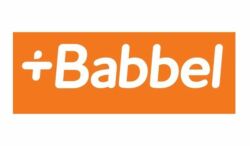
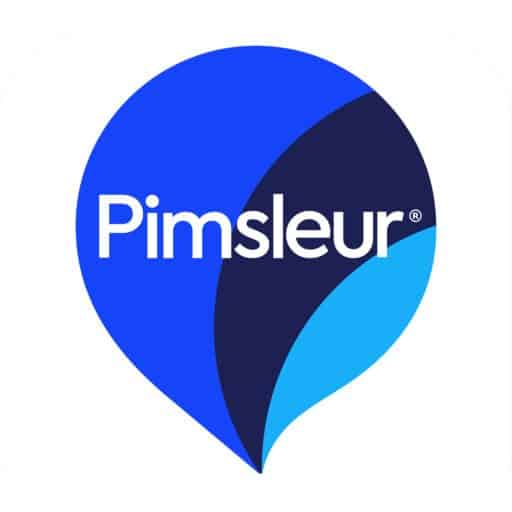
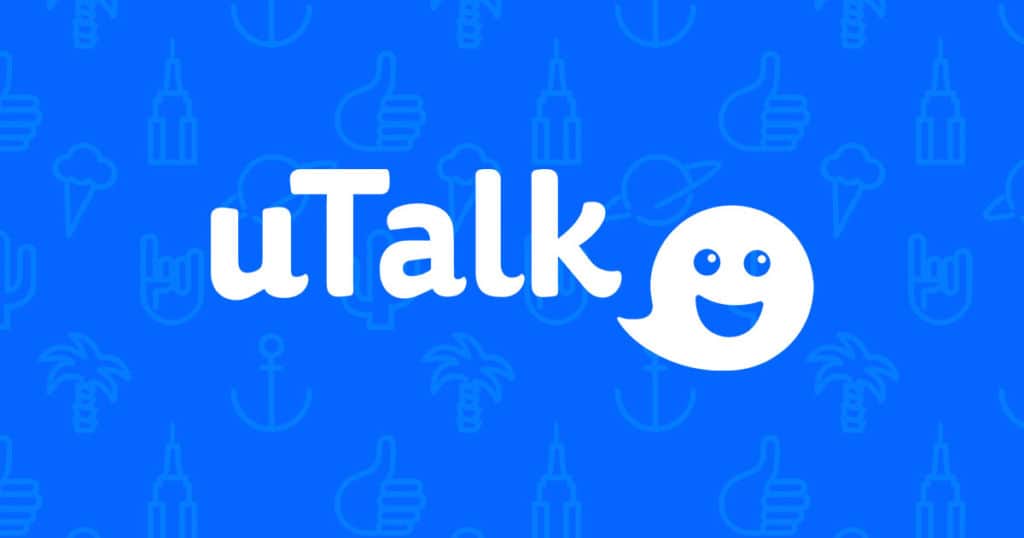
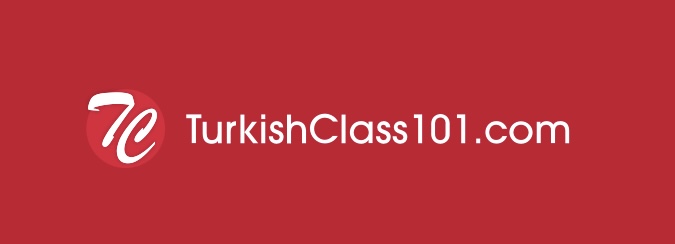
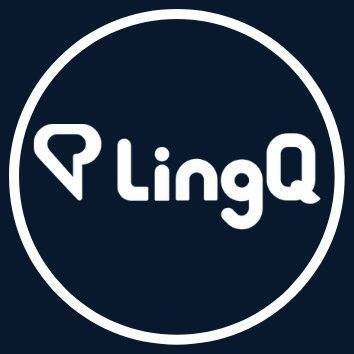
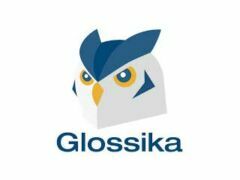
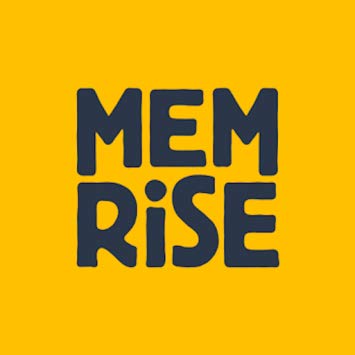

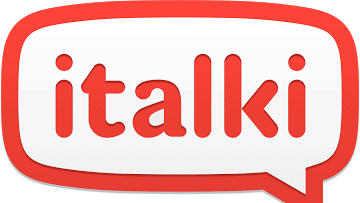
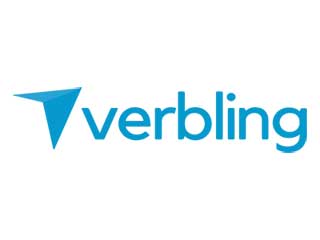
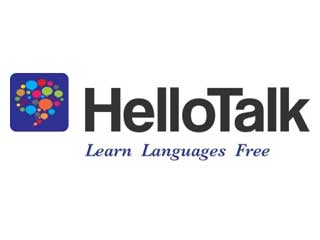


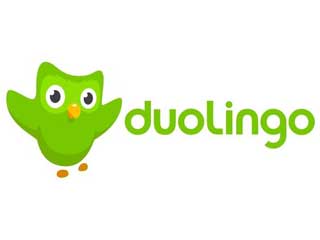

I am refreshing my knowledge of Turkish after a long lapse as prep for an upcoming trip to Turkey. I lived/attended college in Istanbul for 2 years, and I have also studied Arabic and Persian. I have a strong foundation in Turkish grammar, but vocabulary, pronunciation, and above all listening skills need refreshing.
Each person has different needs and tastes. Here are some comments.
1. Hands On Turkish : Requires Flash. Automatic disqualification for security reasons.
2. Babbel: I just signed up for a 1-month free student trial (available to students during Pandemic), so I don’t yet have opinions.
3. Language Transfer: Podcast based, not for me.
4. DuoLingo: I have used it in the past, and their approach may work for my needs.
5. Rosetta Stone: Just finished a trial. The fact that they use no English at all was attractive. Native speakers spoke at a slower than normal pace, which was useful at first for a refresher. I found a few errors in responses where they would not accept the correct response. Will not be going on to paid subscription.
6. Transparent Language: Actually my favorite so far, in part because of its strong feedback on pronunciation through sound graphs. Relentless repetition is useful when you are trying to nail pronunciation. Native speakers speak at a normal conversational pace. Too soon to tell if it will go far enough to meet my conversational communication needs.
7. Glossika: Didn’t fit my learning style.
8. Pimsleur: I can’t put my finger on it, but wasn’t a good fit for my needs and learning style.